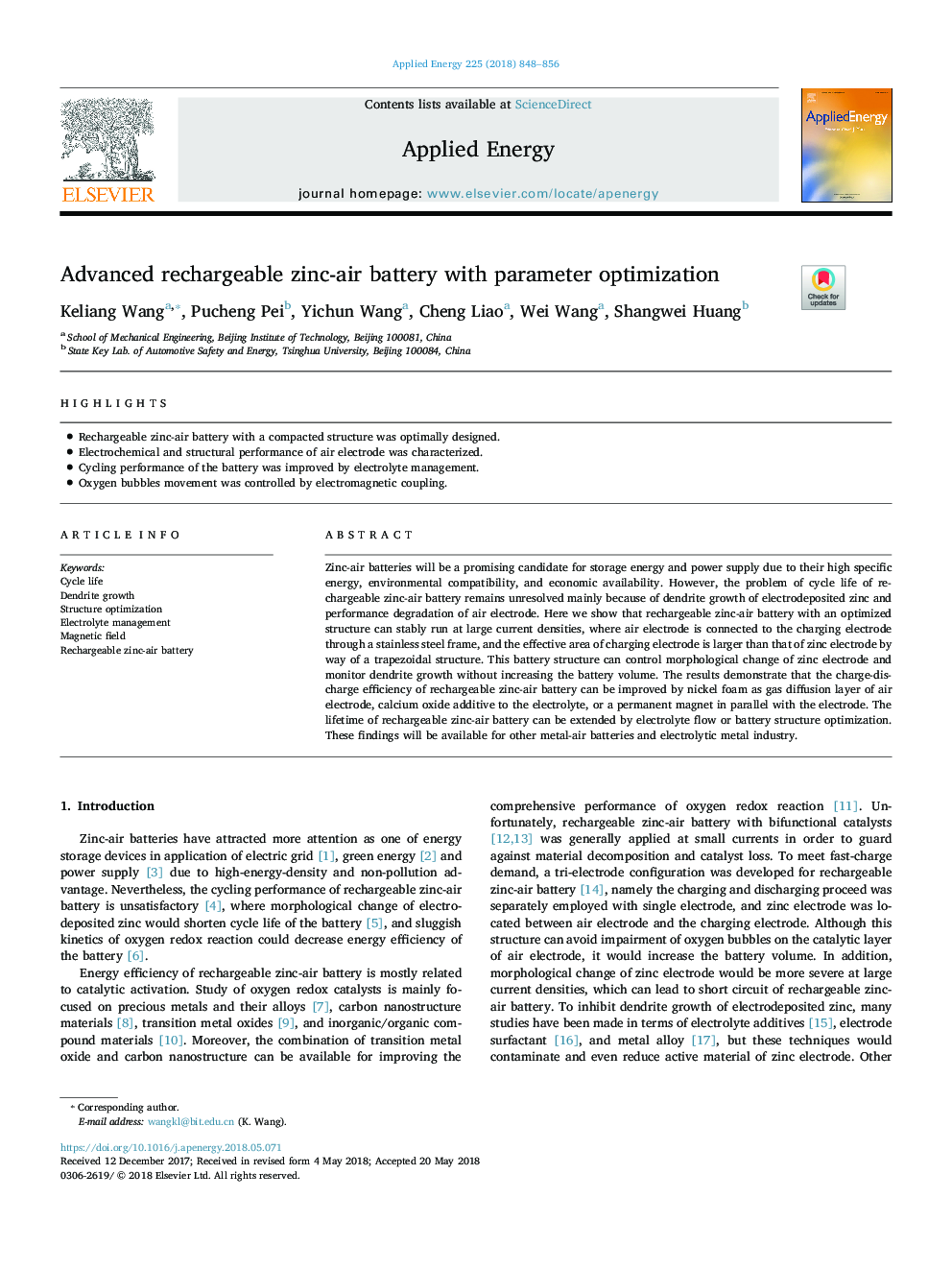| Article ID | Journal | Published Year | Pages | File Type |
|---|---|---|---|---|
| 6679978 | Applied Energy | 2018 | 9 Pages |
Abstract
Zinc-air batteries will be a promising candidate for storage energy and power supply due to their high specific energy, environmental compatibility, and economic availability. However, the problem of cycle life of rechargeable zinc-air battery remains unresolved mainly because of dendrite growth of electrodeposited zinc and performance degradation of air electrode. Here we show that rechargeable zinc-air battery with an optimized structure can stably run at large current densities, where air electrode is connected to the charging electrode through a stainless steel frame, and the effective area of charging electrode is larger than that of zinc electrode by way of a trapezoidal structure. This battery structure can control morphological change of zinc electrode and monitor dendrite growth without increasing the battery volume. The results demonstrate that the charge-discharge efficiency of rechargeable zinc-air battery can be improved by nickel foam as gas diffusion layer of air electrode, calcium oxide additive to the electrolyte, or a permanent magnet in parallel with the electrode. The lifetime of rechargeable zinc-air battery can be extended by electrolyte flow or battery structure optimization. These findings will be available for other metal-air batteries and electrolytic metal industry.
Related Topics
Physical Sciences and Engineering
Energy
Energy Engineering and Power Technology
Authors
Keliang Wang, Pucheng Pei, Yichun Wang, Cheng Liao, Wei Wang, Shangwei Huang,
